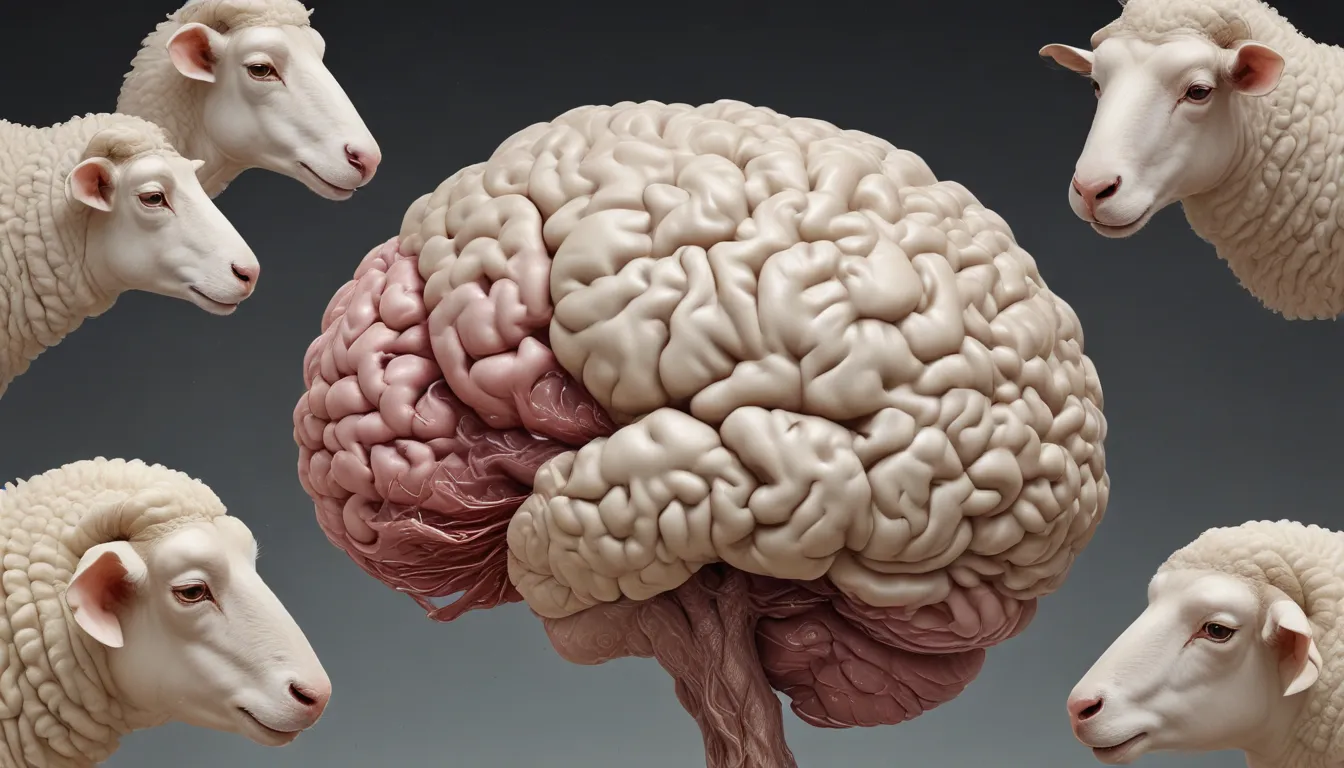A Note About Images: The images used in our articles are for illustration purposes only and may not exactly match the content. They are meant to engage readers, but the text should be relied upon for accurate information.
Welcome to the captivating world of sheep brains, where intricate structures and complex functions converge to offer a wealth of knowledge waiting to be explored. As we embark on this enlightening journey, we will uncover 10 intriguing facts about sheep brains and their role in expanding our understanding of neuroscience. From their unique characteristics to their valuable contributions in scientific research, sheep brains hold a plethora of insights that will leave you amazed and inspired.
The Marvels of Sheep Brains
Sheep brains are not just ordinary organs; they are a pivotal source of information that sheds light on the complexities of brain function, behavior, and diseases. These remarkable organs play a significant role in advancing medicine and scientific research by providing valuable insights into both human and animal brain functions.
1. Sheep Brains in Research
Sheep brains are a cornerstone in neurological and psychological research due to their striking similarities to human brains. Researchers leverage these resemblances to study various brain-related conditions and phenomena, making sheep brains a valuable resource for advancing our understanding of the brain.
2. The Division of Sheep Brains
Similar to the human brain, sheep brains are divided into different lobes, each responsible for specific functions such as sensory perception, motor control, and cognitive processes. This division allows researchers to explore the specialized functions of each lobe and its role in overall brain function.
3. Complex Neural Networks
Within the confines of sheep brains lie intricate neural networks that facilitate fundamental brain functions such as memory, learning, and sensory processing. These networks provide researchers with a window into the neural mechanisms that underlie complex brain processes.
4. Unique Behavioral Patterns
Studying sheep brains unveils the unique behavioral patterns exhibited by these animals, offering insights into how their brains process emotions, social interactions, and environmental stimuli. By unraveling these patterns, researchers gain a deeper understanding of the cognitive processes that govern sheep behavior.
5. Insights into Neurodegenerative Diseases
Research involving sheep brains has contributed significantly to our understanding of neurodegenerative diseases such as Alzheimer’s and Parkinson’s. These insights offer potential avenues for therapeutic interventions and pave the way for advancements in treating these debilitating conditions.
6. Educational Dissections with Sheep Brains
In educational settings, sheep brains serve as invaluable tools for hands-on learning experiences in brain anatomy and physiology. Students can explore the structural intricacies of the brain firsthand, deepening their understanding of this complex organ.
7. A Renewable Resource for Scientific Inquiry
The availability of sheep brains as a sustainable and ethical research resource supports ongoing investigations into brain structure, function, and pathology. This sustainable aspect of sheep brains ensures that scientific inquiry can continue to thrive without compromising ethical standards.
8. Advancements in Veterinary Medicine
Insights gained from studying sheep brains have fueled advancements in veterinary neurology, leading to improved diagnosis and treatment of neurological disorders in livestock. By understanding the intricacies of sheep brains, veterinarians can provide better care for animals with neurological conditions.
9. Models for Brain-Related Studies
With biological similarities to human brains, sheep brains serve as valuable models for investigating various neurological and psychological phenomena. These models contribute to advancements in brain research by offering insights into brain function, behavior, and pathology.
10. Unraveling Brain Evolution
By examining the evolutionary aspects of sheep brains, researchers gain valuable insights into the development of complex neural systems. Understanding how sheep brains have evolved over time provides a broader perspective on the origins of brain complexity and function.
Embracing the Wonder of Nature’s Designs
In conclusion, the study of sheep brains offers a gateway to understanding the intricate workings of the brain and its vital role in shaping behavior, cognition, and disease. By immersing ourselves in the marvels of sheep brains, we can unlock a treasure trove of knowledge that enriches our understanding of the animal kingdom and the mysteries of neuroscience. Let’s embrace the wonder of nature’s designs and continue to unravel the complexities of the brain with awe and curiosity.
FAQs
What makes sheep brains unique?
Sheep brains possess distinctive characteristics, including complex structures and specialized regions that contribute to their vital functions. Exploring these unique features provides valuable insights into the complexities of the brain.
How are sheep brains utilized in scientific research?
Sheep brains serve as valuable models for neurological studies, offering researchers a platform to investigate various aspects of brain function, behavior, and pathology. Their relevance in scientific research spans diverse fields, including neurology, psychology, and veterinary medicine.
Trustworthy Content for Enlightening Discoveries
Our commitment to delivering trustworthy and engaging content is at the core of what we do. Each fact on our site is contributed by real users like you, bringing a wealth of diverse insights and information. Our dedicated editors meticulously review each submission to ensure the highest standards of accuracy and reliability. Trust in our dedication to quality and authenticity as you embark on a journey of exploration and learning with us.






